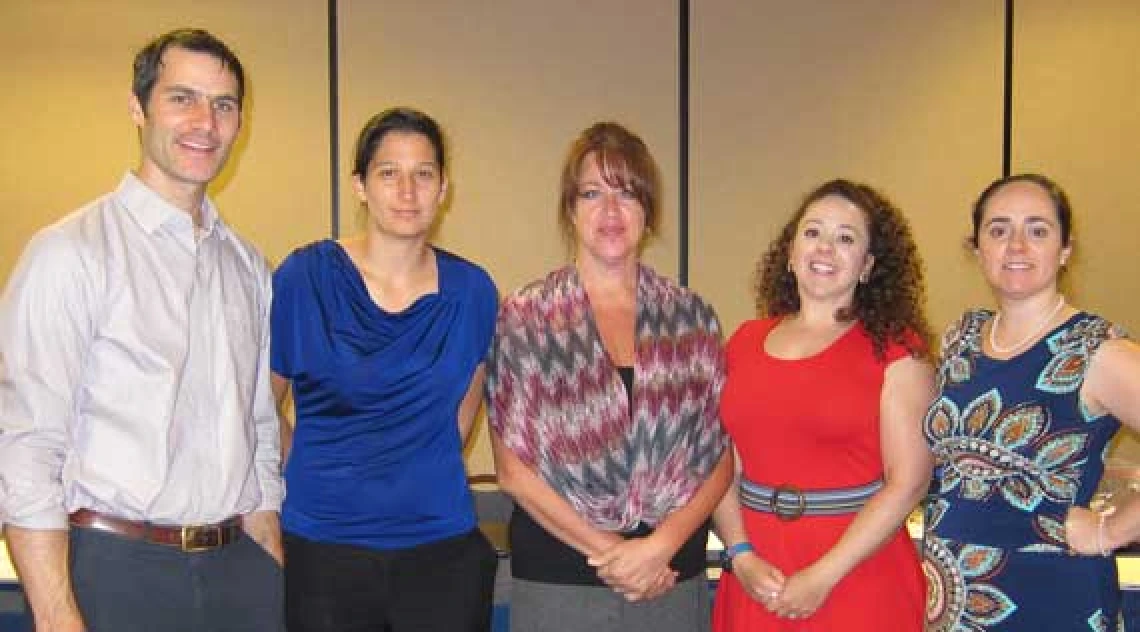UA SRP’s Collaborative Partnerships Showcased at EPA Community Involvement Conference

 Dr. Sarah Wilkinson spoke in two sessions at the US Environmental Protection Agency (EPA)’s 14th Community Involvement Training Conference held in Atlanta, GA, August 4-6, 2015. The theme of the conference was “Making a difference in Communities,” and brought together 450 EPA personnel and related stakeholders focused on community engagement. Wilkinson, the Research Translation Core leader for the University of Arizona Superfund Research Program (UA SRP), spoke in two sessions with her colleagues, both under the topic of “The Art of Leveraging Existing Capacity and Resources in Community Involvement.”
Dr. Sarah Wilkinson spoke in two sessions at the US Environmental Protection Agency (EPA)’s 14th Community Involvement Training Conference held in Atlanta, GA, August 4-6, 2015. The theme of the conference was “Making a difference in Communities,” and brought together 450 EPA personnel and related stakeholders focused on community engagement. Wilkinson, the Research Translation Core leader for the University of Arizona Superfund Research Program (UA SRP), spoke in two sessions with her colleagues, both under the topic of “The Art of Leveraging Existing Capacity and Resources in Community Involvement.”
 In one presentation, “Enhancing Community Involvement through University-Federal Agency Collaboration: Partners in Technical Assistance Program,” Wilkinson and colleagues Melissa Dreyfus (EPA HQ), Alicia Lawson (NIEHS SRP), Alanna Conley (EPA Region 10), and Kathleen Gray (UNC SRP) described their work developing informational materials and activities for community audiences impacted by Superfund issues. They also led the group in a hands-on activity designed to illustrate the concepts of metals bioavailability in soils, and received helpful feedback. See the NIEHS SRP 2015 News Page for more details about the presentation.
In one presentation, “Enhancing Community Involvement through University-Federal Agency Collaboration: Partners in Technical Assistance Program,” Wilkinson and colleagues Melissa Dreyfus (EPA HQ), Alicia Lawson (NIEHS SRP), Alanna Conley (EPA Region 10), and Kathleen Gray (UNC SRP) described their work developing informational materials and activities for community audiences impacted by Superfund issues. They also led the group in a hands-on activity designed to illustrate the concepts of metals bioavailability in soils, and received helpful feedback. See the NIEHS SRP 2015 News Page for more details about the presentation.
 A second presentation entitled “Transdisciplinary Collaborations to Enhance Interactions with Communities at Contaminated Sites,” described community engagement efforts at the Iron King Mine and Humboldt Smelter Superfund site in Dewey-Humboldt, AZ. The UA SRP has worked as the academic arm of a transdisciplinary team including federal (EPA and the Agency for Toxic Substances and Disease Registry), state (the Arizona Department of Health Services and the Arizona Department of Environmental Quality), and community (Community Coalition of Dewey-Humboldt) organizations who collaborate to coordinate activities, develop public messages, and share information about the community. Wilkinson and colleagues Ben Gerhardstein (ATSDR Region 9), Amanda Pease (EPA Region 9), Rose Eitemiller (Community Coalition), and Mónica Ramírez-Andreotta (UA) summarized the benefits and challenges of transdisciplinary collaboration at environmental contamination sites, and led participants in a World Café discussion to explore collaboration opportunities in their own work.
A second presentation entitled “Transdisciplinary Collaborations to Enhance Interactions with Communities at Contaminated Sites,” described community engagement efforts at the Iron King Mine and Humboldt Smelter Superfund site in Dewey-Humboldt, AZ. The UA SRP has worked as the academic arm of a transdisciplinary team including federal (EPA and the Agency for Toxic Substances and Disease Registry), state (the Arizona Department of Health Services and the Arizona Department of Environmental Quality), and community (Community Coalition of Dewey-Humboldt) organizations who collaborate to coordinate activities, develop public messages, and share information about the community. Wilkinson and colleagues Ben Gerhardstein (ATSDR Region 9), Amanda Pease (EPA Region 9), Rose Eitemiller (Community Coalition), and Mónica Ramírez-Andreotta (UA) summarized the benefits and challenges of transdisciplinary collaboration at environmental contamination sites, and led participants in a World Café discussion to explore collaboration opportunities in their own work.

